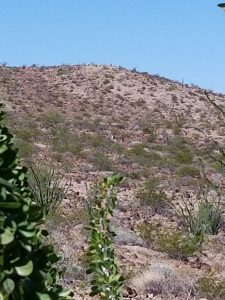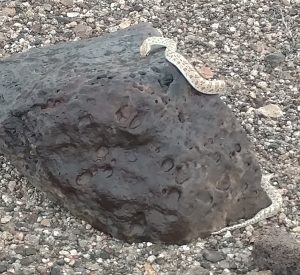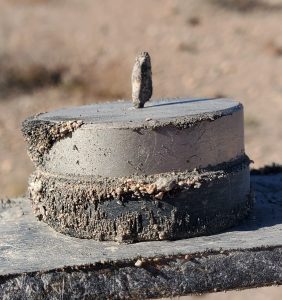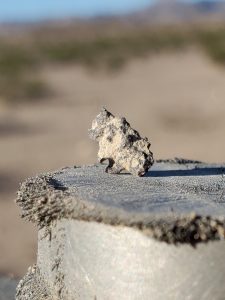Meteorite hunting in Franconia, AZ
This guest article was written by local meteorite hunter Eric Rasmussen by request from BCMS Director Rhonda Stroud. Meteorite hunting can be a great way to have fun and start or expand a collection. However, before hunting for meteorites, make sure to check local laws regarding meteorite hunting, land ownership, and property access rules (public as well as private). Always respect the law, the land, and leave no trace. For a map of Arizona land ownership, see http://gis.azland.gov/webapps/parcel/.
Rasmussen here describes his experiences hunting in a dense collection area of northeastern Arizona which encompasses, among others, the Franconia (H5 chondrite) strewn field, and discusses finding pieces of the Sacramento Wash 005 (H-metal) meteorite. To date, 44 distinct meteorites have been classified from this same area. Sacramento Wash 005 was classified in 2008 by Buseck Center Deputy Director Dr. Devin Schrader; click here to read about some of his research on this meteorite. The opinions and information expressed are the author’s own, and do not represent those of the Buseck Center for Meteorite Studies.

Unfortunately for me, I missed the heyday of meteorite hunting in the Franconia area by about seven years. My first meteorite hunt there was in 2016. During that first hunt, I found two small chondrites in the very northern end of the strewn field with my new Gold Bug 2 metal detector. Several of my return visits resulted in no meteorite finds, as I later learned that I was hunting too far west of the strewn field. My knowledge of the area increased thanks to other more experienced meteorite hunters so now I feel more confident in my trips there.

On Friday we arrived at Franconia around 11:30 AM. The heavy rains in Arizona during September and October had really washed out the road where you enter the strewn field. There were a large grader and a front-end loader working on the road when we arrived, and they had made it a bit easier for us to get where we needed to be. We were out in the desert swinging our metal detectors before noon.

About one and a half hours into our meteorite hunt, I was rewarded by a strong audible signal, which ended up being a small iron sulfide meteorite (a piece of the Sacramento Wash 005 meteorite, learn more here). About an hour after that, my partner found his first meteorite, which was also an iron sulfide meteorite. I found two more iron sulfides that afternoon before calling it a day.

I had been texting our friends who were searching for the new fall northeast of us. They and several others had put in lots of time, but no freshly fallen meteorites had been found. We headed back to the Hotel in Lake Havasu City, had a great dinner and then rested our tired bodies from a full day of hunting meteorites in the desert. Sunday morning, we headed back to Phoenix with our newly found space rocks.
This guest article was written by meteorite hunter Eric Rasmussen.